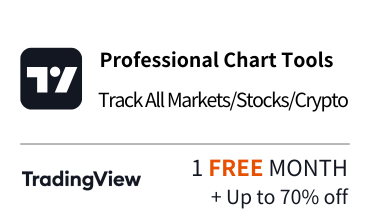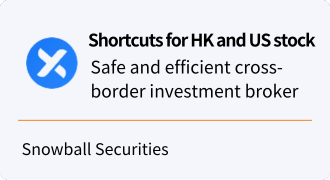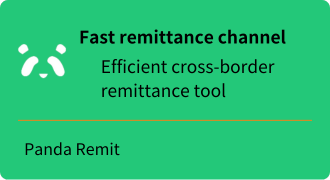Mastering Copy Trading Performance Analysis and Strategy Optimization: A Data-Driven Guide
[DISCLAIMER] This article is for educational and informational purposes only and does not constitute investment advice. Readers should consult with qualified financial professionals before making any investment decisions.
In the vast ocean of financial markets, tradefollowing is like a navigational vessel, while performance analysis and strategy optimization are your compass and charts. As a veteran of quantitative trading and financial media, I understand the importance of accurate performance analysis and continuous strategy optimization to improve the effectiveness of order following. Today, let's dive deeper into how a data-driven approach can improve your order-following trading results, a process that is critical to increasing your trading efficiency and profitability.
Ⅰ. Selection of Performance Indicators
First, we need to determine which metrics best reflect your trade-following performance. Here are some key indicators and their importance:
- Total Return: This is the most visual indicator of the overall performance of your investments.
Calculate the formula:

- Risk Adjusted Return:
- Sharpe Ratio: Measures the relationship between excess return and volatility.
Calculation formula:

Where Rp is the portfolio return, Rf is the risk-free rate(We use 3%), and σp is the standard deviation of the portfolio return. - Sortino Ratio: similar to the Sharpe Ratio, but only considers downside risk.
Calculation formula:

Where σd is the portfolio downside volatility.
- Sharpe Ratio: Measures the relationship between excess return and volatility.
- Maximum retracement: Reflects the maximum loss that could be experienced during the investment process.
Calculated as:

- Winning Ratio: Reflects the percentage of profitable trades for the strategy.
Calculated as:

- Average Profit/Loss Ratio: Measures the ratio of average profitable trades to average losing trades.
Calculation:

- Trading Frequency: Reflects the level of activity of the strategy and helps to assess the cost of trading and the risk of overtrading.
These metrics were chosen because together they provide a comprehensive view that reflects not only returns, but also takes into account risk and trading characteristics.
Ⅱ. Data collection and analysis tools
Data collection and analysis is made incredibly easy and efficient on the Follow-Through System Control Center 6copy.com. The Control Center backend provides investors with a powerful tool that allows you to monitor and analyze the performance of your followers' trades in real-time. Let's take an in-depth look at this powerful back office system:
2.1 Comprehensive performance indicators

The Control Center backend of the order following system provides a range of key performance indicators, including but not limited to:
- Total Return
- Sharpe Ratio
- Maximum retracement
- Winning Ratio
- Average Profit/Loss Ratio
- Trading Frequency
These metrics comprehensively cover the key performance indicators we discussed in the previous section, allowing you to evaluate your follow-through strategy from all angles.
2.2 Multi Time Period Analysis
A particularly valuable feature is that 6copy.com allows you to view performance data for different time periods. You can choose to view:
- Daily data
- Weekly data
- Monthly data
- Annual data
This multi-temporal view allows you to grasp both short-term fluctuations and long-term trends to make more informed decisions.
2.3 Real-time data updates
The data in the Control Center's back office is updated in real time, which means that you can always be up-to-date with the latest trading performance. This immediacy is especially important in the fast-changing financial markets, allowing you to identify problems and make adjustments in a timely manner.
2.4 Data Visualization
In addition to raw data, the Follower System Control Center provides visual charts and graphs to help you better understand your data. These visualization tools may include:
2.5 Revenue graphs

- Variety distribution charts
- Profit distribution charts for different time periods
- These charts help you quickly identify trends and patterns without having to dive into complex numbers.
2.6 How to use these tools for risk control strategy adjustment
With these powerful tools, you can perform risk control and strategy optimization more effectively:
- Real-time risk assessment: By monitoring maximum retracements and Sharpe ratios, you can assess the risk level of your strategy in real-time and make timely adjustments if the risk is out of your tolerance.
- Strategy Efficiency Analysis: Using win rate and average P/L ratio data, you can assess the overall efficiency of your strategy and target optimization.
- Trade Frequency Optimization: By analyzing trade frequency data across different time periods, you can identify the optimal trading rhythm to avoid overtrading or missing important opportunities.
- Long-term Trend Grasping: By utilizing data from multiple time periods, you can differentiate between short-term fluctuations and long-term trends to make more informed long-term investment decisions.
- Timely stop-loss and take-profit: By monitoring total return and maximum retracement in real time, you can set more precise stop-loss and take-profit points to protect your investment.
2.7 Continuous learning and adjustment
Remember, these tools and data provided by the back-end of the Follow Order System Control Center are valuable resources for your continuous learning and improvement. Regularly review and analyze these data, combined with market changes and your trading decisions, you will be able to continue to optimize your follow orders strategy and improve investment efficiency.
By taking full advantage of these powerful features in the Control Center backend of your order following system, you can apply a data-driven decision-making approach to your order following trades, greatly improving your trading efficiency and risk management capabilities. In the next section, we will delve into how to interpret this data and translate it into specific strategy optimization actions.
Ⅲ. Performance Analysis Methodology
Now, let's dive into how to interpret these performance indicators:
- Risk tolerance assessment: Compare the maximum retracement to the total return. For example, if your strategy has a 20% total return but a 15% maximum retracement, this may be beyond your risk tolerance.
- Strategy Efficiency Comparison: Use the Sharpe Ratio. A higher Sharpe Ratio means that the strategy has a higher excess return per unit of risk. For example, a strategy with a Sharpe Ratio of 1.5 typically outperforms a strategy with a Sharpe Ratio of 0.8.
- Excessive Trading Recognition: Analyze the frequency of trades and the average profit/loss ratio. If the trading frequency is high but the average P/L ratio is low, there may be an overtrading problem.
- Risk Management Evaluation: Combine Winning Ratio and Average P/L Ratio. For example, a 50% win rate with a 2:1 average P/L ratio is usually a good combination. 4.
Ⅳ. Identify problems and opportunities
Based on the results of the analysis, we can identify problems and opportunities for improvement in the strategy:
- Over-trading: If the number of trades per day is more than 5 (depending on the strategy) and most of them are small profits, there may be an over-trading problem.
- Poor Stop Loss Setting: If the win rate is below 40% but the average P/L ratio is above 2:1, the stop loss setting may need to be adjusted.
- Improper risk management: If there are frequent small profits but occasional large losses, the risk management strategy may need to be reassessed.
Ⅴ. Strategy Optimization Tips
Based on the above analysis, here are some specific optimization tips:
- Adjust Stop Loss and Take Profit levels: For example, if the average P/L ratio is below 1.5, consider increasing the Take Profit level by 20%.
- Optimize money management: Use a fixed percentage risk approach, risking no more than 1-2% of your account total per trade.
- Adjust the number of traders to follow: If you find that the correlation of your strategy is too high, consider increasing the number of traders to follow in order to spread the risk.
- Adjust for market conditions: In high volatility markets, it may be necessary to trade less frequently or reduce the size of your positions.
- Backtesting: Backtest your optimized strategy using historical data to ensure that the improvements are working.
Ⅵ. Continuous Monitoring and Adjustment
Markets are dynamic and so should your strategy. Establish a mechanism for regular REVIEW, for example:
- Daily review of key metrics
- Weekly in-depth analysis
- Monthly comprehensive evaluation and adjustment of the strategy
Ⅶ. Case studies
Let's illustrate this process with a simplified case study:
Suppose you have a follow-the-sun strategy and the initial analysis shows:
- Total return: 15%
- Maximum retracement: 12
- Sharpe Ratio: 0.8
- Winning Ratio: 45
- Average Profit/Loss Ratio: 1.2
- Average number of trades per day: 8
7.1 Problem Identification:
- Sharpe Ratio is low, indicating less than optimal risk-adjusted returns
- Trading frequency is too high, possibly overtrading
- Average P&L ratio is low
7.2 Optimization Measures:
- Increase Take Profit level by 30% and tighten Stop Loss by 10%
- Set the maximum number of trades per day to 5
- Increase the number of traders to follow from 3 to 5
7.3 Results after three months:
- Total return: 18
- Maximum retracement: 10%
- Sharpe Ratio: 1.2
- Winning Ratio: 48
- Average Profit/Loss Ratio: 1.5
- Average number of trades per day: 4
This case shows how to identify problems through analysis and improve strategy performance with specific optimizations.
Ⅷ. Conclusion
Performance analysis and strategy optimization are the keys to successful follow-through trading. Through continuous data analysis and strategy adjustments, you can continually improve the effectiveness of your follow-through trades and remain competitive in the ever-changing financial markets. Remember, this is a continuous learning and adaptation process. Start applying these techniques and stay sensitive to the market and you will be well on your way to follow-the-money trading.
Finally, I want to emphasize that while data analysis and strategy optimization are important, they should not completely replace your judgment and intuition. Think of these tools as aids to decision-making, not as absolute instructions. Also, always keep in mind the importance of risk management and don't ignore potential risks in the pursuit of high returns.
Do you have any more questions about Follow-Trading Performance Analysis? Or do you have any unique analysis methods you would like to share? Feel free to share your thoughts or experiences with me in the comments section! Let's grow together in this world of opportunities and challenges of follow-through trading. Remember, in the financial markets there is no end to learning, and continuous analysis and optimization is the key to success.







